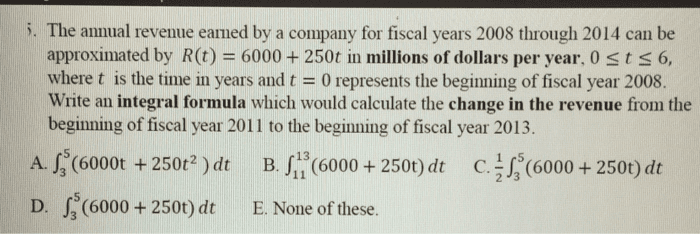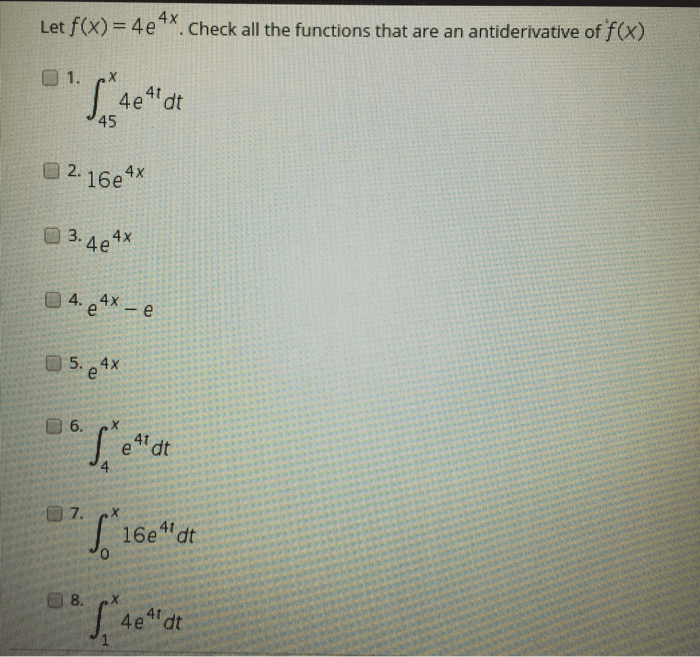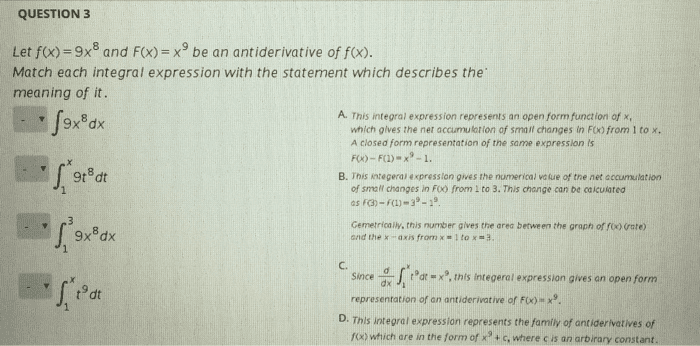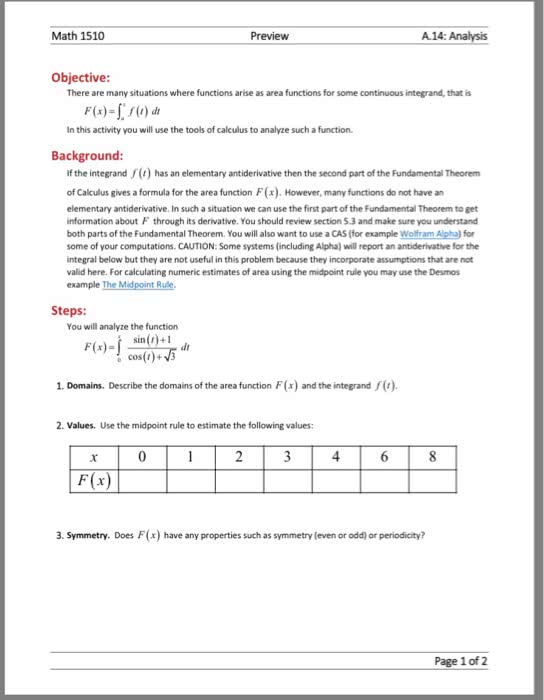MAT 21B Lecture Notes - Lecture 1: Antiderivative, Integral Symbol, Point4
4.8 Antiderivatives
Derivative problem: Given a function F(x), how to find its derivative
f(x)?
•When F(x) is nice enough, we have learned many formulas and rules;
•When F(x) is not that nice, we may have to use definition.
Antiderivative problem: If the derivative f(x) is given, can you find the
original function F(x) such that F0(x) = f(x)?
In other words,
•If the velocity is given, can you find the position?
•If the slope of a curve is given, can you figure out the curve?
Example: Can you find an antiderivative for f(x)=2x?
Answer: ALL antiderivatives of f(x)=2xare in the form of
F(x) = x2+C
where Cis an arbitrary constant. There are vertical translation of one another.
In general, if F(x) is an antiderivative of f(x) on an interval I, then the
most general antiderivative of fon Iis
F(x) + C
where Cis an arbitrary constant.
•It is a family of functions F(x) + Cwhose graphs are vertical translations
of one another.
•Slopes of all these graphs are equal to f(x).
Indefinite Integral: This family of antiderivatives F(x) + Cis very im-
portant, we denote it by a special symbol
Zf(x)dx,
called the indefinite integral of fwith respect to x.
Here,
1

83
MAT 21B Full Course Notes
Verified Note
83 documents
Document Summary
Answer: all antiderivatives of f (x) = 2x are in the form of. F (x) = x2 + c where c is an arbitrary constant. In general, if f (x) is an antiderivative of f (x) on an interval i, then the most general antiderivative of f on i is where c is an arbitrary constant. F (x) + c: it is a family of functions f (x) + c whose graphs are vertical translations of one another, slopes of all these graphs are equal to f (x). Inde nite integral: this family of antiderivatives f (x) + c is very im- portant, we denote it by a special symbol. Z f (x) dx, called the inde nite integral of f with respect to x. 1: f (x) is the integral, x is the variable of integration, r is an integral sign. Z f (x) dx = f (x) + c, all antiderivatives of f (x) .







